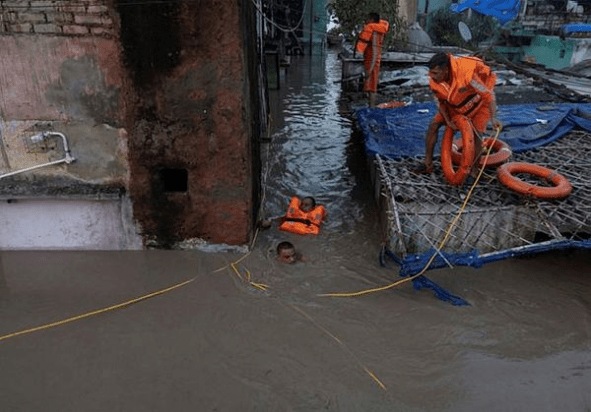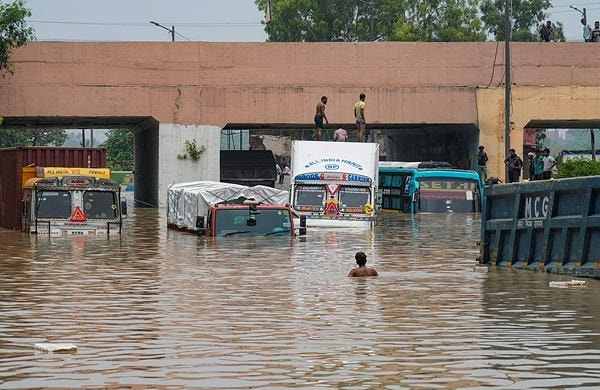Delhi is witnessing unprecedented scenes with water levels of Yamuna reaching an all-time high and river water gushing into nearby and low-lying areas of the national capital. As the water level in the Yamuna continues to rise, the city is now on an extreme flood alert.
Thousands of people have been evacuated and taken to safer places while efforts are underway to curb the situation. While the Delhi government kept on changing its statements from ‘being fully prepared’ to ‘Delhi not designed to handle unprecedented rainfall and floods’, the city has come to a standstill with several localities being inundated with knee-deep water, schools being shut and metro operations being disrupted.

Also Read: Delhi Flood News Live Updates
At 8 am today, the water level was 208.48 metres, breaching the previous all-time high of 207.49 metres set in 1978. As Yamuna continues to flow at record-breaking levels and is expected to rise further, what are the factors behind the unusual flood-like situation in the city?
The heavy rain in Delhi and surrounding areas, as well as release of water from Hathnikund Barrage in Haryana are the prime factors behind the flood-like conditions in parts of the national capital, officials say. But experts say that other factors may have also contributed to the crisis that Delhi is facing.
“We noticed that the water released from the Hathnikund Barrage took less time to reach Delhi compared to previous years. The main reason could be encroachment and siltation. Earlier, the water would have had more space to flow. Now, it passes through a constricted cross-section,” a senior official at the Central Water Commission (CWC) said, NDTV reported.
Also Read: Arvind Kejriwal sends SOS to Centre as Yamuna flows at record high in Delhi
Experts cite extreme rainfall in a short duration as the primary reason for the swollen Yamuna. “The same amount of water falling over a longer period of time would not lead to such a situation as it allows time for the water to pass through. Even a lesser amount of precipitation can result in a higher level downstream if it falls in a shorter period of time,” an expert explained.

Meanwhile, the barrage in Haryana filled up due to very heavy rain further north, in Himachal Pradesh, where the monsoon brought large-scale destruction over the past week. The Haryana government then released water from the barrage into Yamuna, which caused the flooding in Delhi.
Delhi has imposed prohibitory orders with the situation expected to get worse today. As many as 12 National Disaster Response Force (NDRF) teams are already on the ground for rescue work.
Also Read: Yamuna swells to record levels and rising, thousands taken to safety as Delhi sounds flood alert
Interaction between western disturbance and monsoon trough
An interaction between a western disturbance and the monsoon trough led to extremely heavy rainfall over Himachal Pradesh and also affected other states, including Uttarakhand, Punjab and Haryana, causing landslides, flash floods, widespread damage to highways and other infrastructure last week.
From a 10 per cent deficiency in rainfall till the end of June, the monsoon’s surge over the west coast and parts of northern India in the past week led to a 2 per cent excess rainfall over the country on July 9, according to the India Meteorological Department (IMD).

